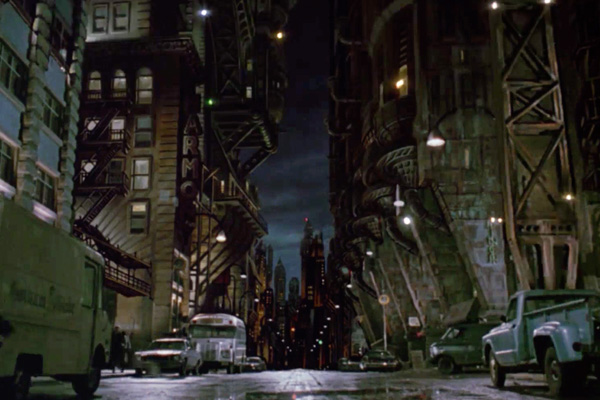Why is New York called Gotham?
10/09/2014
Say the name ‘Gotham City’ to anyone and they almost certainly think of the fictional US city that features in DC comic books and is the home of Batman. First identified as the Dark Knight’s domain in Batman #4 published in 1940, Detective Comics were based in Manhattan at the time and it’s easy to see why the city of New York was an influence.
Batman co-creator Bill Finger explains the reason for changing Batman’s locale from New York City to a fictional city, “Originally I was going to call Gotham City ‘Civic City.’ Then I tried ‘Capital City,’ then ‘Coast City.’ Then I flipped through the New York City phone book and spotted the name ‘Gotham Jewelers’ and said, ‘That’s it,’ Gotham City. We didn’t call it New York because we wanted anybody in any city to identify with it.”
New York Times columnist William Safire described Gotham City as “New York below 14th Street, from SoHo to Greenwich Village, the Bowery, Little Italy, Chinatown, and the sinister areas around the base of the Manhattan and Brooklyn Bridges.” Artist Neal Adams sees the 1940s crime-plagued Chicago as the basis for Gotham, while writer/artist Frank Miller has stated that Metropolis is New York in the daytime and Gotham City is New York at night.
However, it had long been a well-known nickname for New York City even prior to Batman’s introduction in 1939, which explains why ‘Gotham Jewelers’ and many other businesses in New York City have the word ‘Gotham’ in them.
The nickname found its way into popular culture in the 19th century, having been first attached to New York by author Washington Irving – famous for his short stories The Legend of Sleepy Hollow and Rip Van Winkle – in the November 11, 1807 edition of his Salmagundi, a periodical which lampooned New York culture and politics. In it were published essays concerning events in “the thrice renowned and delectable city of Gotham”.
Irving took the name from a medieval village in Nottinghamshire, England. Proverbs tell of a settlement called Gotham or Gottam, meaning ‘Goat’s Town’ in old Anglo-Saxon. Folk tales from the Middle Ages make Gotham out to be the village of simple-minded fools, perhaps because the goat was considered a foolish animal. However, some tales describe the denizens of Gotham as having feigned stupidity to prevent King John from establishing a residence there. This etymology is cited by the Joker in Detective Comics #880, in which he tells Batman that the word means “a safe place for goats”.
In Swamp Thing #53, Alan Moore wrote a fictional history for Gotham City that other writers have generally followed. According to Moore’s tale, a Norwegian mercenary, Captain Jon Logerquist, founded Gotham City in 1635 and the British later took it over – a story that parallels the founding of New York by the Dutch as New Amsterdam and later takeover by the British. During the American Revolutionary War, Gotham City was the site of a major battle, paralleling the Battle of Brooklyn in the American Revolution.

In my mind, this is what Gotham looks like – Tim Burton’s 1989 Batman, the best of the bunch
Now with the TV series beginning and the DC universe ever expanding in the cinema, it’s become terribly fashionable. But without a doubt it has been the result of Tim Burton’s epic 1989 Batman – which is still by far the best big screen adaptation, the art of Frank Miller and even Christopher Nolan’s first film in his trilogy, Batman Begins, that have firmly cemented in our minds the dark, broody, rain-soaked streets of Gotham City with its Gothic-inspired architecture and industrial-looking skyscrapers standing side by side.
All you need do is walk the streets of Manhattan on a cold, November night and imagine looking up and spying the Bat Signal shining in the distance, high above the tallest buildings, projecting that instantly identifiable icon upon a cloudy dark sky. Welcome to New York.